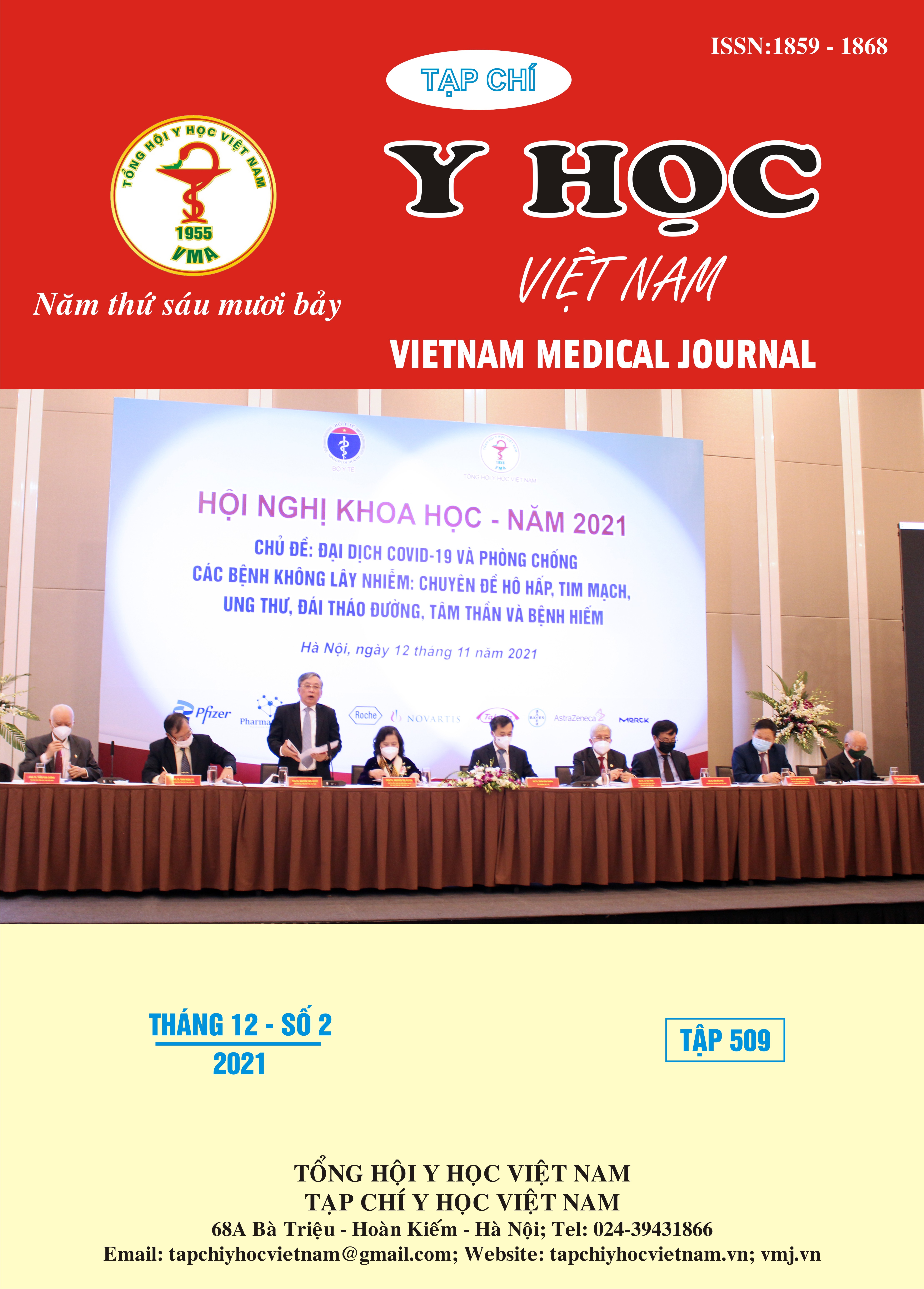ĐẶC ĐIỂM LÂM SÀNG, ĐIỆN SINH LÝ HỌC TIM Ở BỆNH NHÂN HỘI CHỨNG WOLFF – PARKINSON – WHITE CÓ CƠN RUNG NHĨ
Nội dung chính của bài viết
Tóm tắt
Mục tiêu: Mô tả đặc điểm lâm sàng, điện sinh lý tim ở bệnh nhân hội chứng WPW có cơn rung nhĩ và So sánh đặc điểm lâm sàng, điện sinh lý tim ở bệnh nhân Wolff - Parkinson - White có và không có cơn rung nhĩ. Phương pháp nghiên cứu: Nghiên cứu tiến hành trong 49 đối tượng bao gồm 18 bệnh nhân có cơn rung nhĩ trên lâm sàng hoặc trong thăm dò điện sinh lý và 31 bệnh nhân mắc hội chứng Wolff – Parkinson – White. Các bệnh nhân được chọn phù hợp với yêu cầu nghiên cứu. Kết quả nghiên cứu: Nghiên cứu cho thấy trong nhóm rung nhĩ ở hội chứng WPW: tuổi thường gặp 49,2 ± 15,6 tuổi, nam chiếm tỷ lệ cao 72,3%, nhóm bệnh tim mạch kèm theo là THA, chức năng nút xoang và dẫn truyền trong tim bình thường, thời gian trơ của đường phụ ngắn, chiều xuôi 247,7 ± 29,0, chiều ngược 279,0 ± 24,0 P< 0,05. Một đường phụ và vị trí bên phải là thường gặp ở nhóm có rung nhĩ. Kết luận: Giới tính nam, các bệnh kèm theo tăng huyết áp, cường giáp, thời gian trơ của đường dẫn truyền phụ ngắn có thể là các yếu tố có thể ảnh hưởng tới sự xuất hiện của rung nhĩ ở hội chứng WPW.
Chi tiết bài viết
Từ khóa
Đường phụ, Rung nhĩ, Điện sinh lý tim, Nhịp nhanh vào lại nhĩ thất
Tài liệu tham khảo
2. Obeyesekere MN, Leong-Sit P, Massel D, et al. Risk of arrhythmia and sudden death in patients with asymptomatic preexcitation: a meta-analysis. Circulation. May 15 2012;125(19):2308-15. doi:10.1161/circulationaha.111.055350
3. Duckeck W, Kuck KH. [Atrial fibrillation in Wolff-Parkinson-White syndrome. Development and therapy]. Herz. Feb 1993;18(1):60-6. Vorhofflimmern bei Wolff-Parkinson-White-Syndrom. Entstehung und Therapie.
4. Al-Khatib SM, Arshad A, Balk EM, et al. Risk Stratification for Arrhythmic Events in Patients With Asymptomatic Pre-Excitation: A Systematic Review for the 2015 ACC/AHA/HRS Guideline for the Management of Adult Patients With Supraventricular Tachycardia: A Report of the American College of Cardiology/American Heart Association Task Force on Clinical Practice Guidelines and the Heart Rhythm Society. Circulation. Apr 5 2016;133(14):e575-86. doi:10.1161/cir.0000000000000309
5. Chen M, Feng X, Sun J, et al. Risk factors responsible for atrial fibrillation development between symptomatic patients with concealed or manifest atrioventricular accessory pathways. International journal of cardiology Heart & vasculature. Jun 1 2015;7:69-75. doi:10.1016/ j.ijcha.2015.02.010
6. Szumowski L, Orczykowski M, Derejko P, et al. Predictors of the atrial fibrillation occurrence in patients with Wolff-Parkinson-White syndrome. Kardiologia polska. Sep 2009;67(9):973-8.
7. Acharya D, Rane S, Bohora S, Kevadiya H. Incidence, clinical, electrophysiological characteristics and outcomes of patients with Wolff-Parkinson-White syndrome and atrial fibrillation. Indian pacing and electrophysiology journal. Jan-Feb 2020;20(1):3-7. doi:10.1016/j.ipej.2019.12.015
8. Ma L, Li Y, Wang Y, Wang X, Kong J, Wang L. Relationship between accessory pathway location and occurrence of atrial fibrillation in patients with atrioventricular re-entrant tachycardia. Experimental and clinical cardiology. Fall 2004;9(3):196-9.
9. Waspe LE, Brodman R, Kim SG, Fisher JD. Susceptibility to atrial fibrillation and ventricular tachyarrhythmia in the Wolff-Parkinson-White syndrome: role of the accessory pathway. American heart journal. 1986;112(6):1141-1152.


